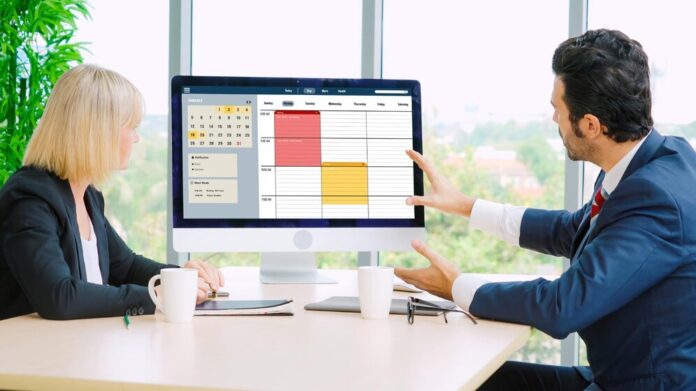Introduction
MySQL, a cornerstone of modern database management, is widely used for its robust performance and scalability. Whether you are a seasoned database administrator or a novice developer, understanding how to interact with MySQL databases efficiently is crucial. One fundamental operation is listing all tables in a MySQL database, a task that can vary in complexity depending on the user’s familiarity with SQL commands and database structure. This guide will explore various methods to show all tables in a MySQL database, providing detailed instructions, use cases, and best practices.
1. Introduction to MySQL
Overview of MySQL
MySQL is an open-source relational database management system (RDBMS) known for its reliability, performance, and ease of use. Developed by Oracle Corporation, MySQL supports various programming languages and platforms, making it a preferred choice for both web and enterprise applications.
Importance of Table Management
In MySQL, a table is a fundamental unit where data is stored and organized. Effective table management is essential for maintaining database performance and integrity. By efficiently listing, querying, and managing tables, you can ensure smooth database operations and quick access to necessary data.
2. Accessing MySQL
Using MySQL Command-Line Interface (CLI)
The MySQL CLI is a powerful tool that allows users to interact directly with their databases using SQL commands. It is commonly used for tasks such as creating, modifying, and managing databases and tables.
- Accessing CLI: To start the MySQL CLI, open your terminal or command prompt and enter:Replace
usernamewith your MySQL username. - Connecting to a Database: Once logged in, you can select a database using:Replace
database_namewith the name of the database you want to use.
Accessing MySQL via PHPMyAdmin
PHPMyAdmin is a web-based tool that provides a graphical interface for managing MySQL databases. It is user-friendly and ideal for users who prefer not to use command-line tools.
- Logging In: Navigate to your PHPMyAdmin installation in a web browser and log in with your MySQL credentials.
- Selecting a Database: Use the left panel to select the database you want to work with.
Connecting Through MySQL Workbench
MySQL Workbench is a comprehensive GUI tool for MySQL database administration and development. It offers features for database modeling, SQL development, and server configuration.
- Starting MySQL Workbench: Open MySQL Workbench and connect to your MySQL server using your credentials.
- Database Management: Use the
Schemaspanel to select and manage your databases.
3. Basic SQL Commands for MySQL
Overview of SQL Commands
Structured Query Language (SQL) is the standard language for interacting with relational databases. Basic SQL commands include SELECT, INSERT, UPDATE, and DELETE, which are used to retrieve and manipulate data.
The SHOW TABLES Command
The SHOW TABLES command is used to list all tables in a selected MySQL database. It is a simple yet powerful command that provides a quick overview of the database structure.
4. Using SHOW TABLES
Syntax and Usage
The basic syntax for the SHOW TABLES command is as follows:
This command will list all tables in the currently selected database.
Examples of SHOW TABLES
- Listing Tables: To list tables in the
example_dbdatabase, first select the database:This will output a list of all tables inexample_db. - Using Patterns: You can use patterns to filter the tables:This command lists all tables whose names start with
user.
Handling Multiple Databases
To list tables from a different database without switching to it, use the following command:
Replace database_name with the name of the database you want to query.
5. Querying Information Schema
Introduction to Information Schema
Information Schema is a system database that provides metadata about other databases on the MySQL server. It contains information about tables, columns, and other database objects.
Using SELECT to List Tables
To list all tables using the Information Schema, execute:
Replace database_name with the name of your database.
Filtering Tables by Criteria
You can filter tables based on various criteria, such as table type or name pattern:
6. Advanced Methods for Showing Tables
Using mysqlshow
The mysqlshow utility provides a command-line way to list databases and tables. To list all tables in a database, use:
Replace username with your MySQL username and database_name with the name of the database.
Scripting with MySQL
Automate the table listing process using scripts. For example, in a shell script:
This script connects to MySQL and lists tables from the specified database.
Automating Table Listing
Use cron jobs or scheduled tasks to automate table listing at regular intervals for monitoring or auditing purposes.
7. Managing MySQL Permissions
Understanding User Roles
MySQL uses roles and permissions to control access to databases and tables. Common roles include DBA, developer, and analyst.
Granting Table Access
To grant access to tables, use the GRANT statement:
Replace database_name with the target database, user with the username, and host with the host.
Security Best Practices
- Regularly review user permissions.
- Use strong passwords and limit user access to only necessary databases and tables.
- Monitor for unauthorized access attempts.
8. Troubleshooting Common Issues
Common Errors with SHOW TABLES
- Access Denied: Ensure the user has the necessary permissions to view tables.
- No Database Selected: Use the
USEcommand to select a database before listing tables.
Debugging Permission Issues
Check user privileges using:
This command lists all permissions granted to the specified user.
Tips for Optimizing Queries
- Use indexes to speed up queries.
- Regularly update statistics and analyze query performance.
9. Integrating Table Listing in Applications
Using PHP to List Tables
In PHP, you can list MySQL tables using the mysqli extension:
Listing Tables in Python Scripts
Use Python’s mysql-connector library to list tables:





